Buying Guide for Shed
- July 6, 2023
- 0 comment
Choosing the right shed for your home is an important decision that can enhance your outdoor space while adding value to your property. With so many options available ranging from materials and sizes to roofing styles, colors, and brands the process can feel overwhelming. This Buying Guide for Sheds will walk you through each factor, offering practical Shed Buying Advice to help you make the best choice for your needs. Whether you’re seeking tips on Shed Materials, Outdoor Shed Installation, or comparing styles, this guide simplifies the process so you can confidently select the best shed for your space.

Material
The material you choose for your shed plays a crucial role in its durability, maintenance requirements, aesthetics, and overall cost. Here’s a breakdown of the three most common options to help you make an informed choice:
- Wood: Wooden sheds are a classic favorite, offering natural beauty that blends seamlessly into gardens. They are durable and highly customizable but require consistent maintenance, such as painting and treating, to prevent rot and insect damage. If you’re seeking a timeless look, wood may be your top pick from this Shed Materials Guide.
- Metal: Metal sheds, often made of steel or aluminum, are known for their strength and pest resistance. They are typically more affordable but may be susceptible to rust or denting. While they may lack the charm of wood, their durability makes them a practical option for many homeowners looking for budget-friendly storage solutions.
- Plastic (Resin or Vinyl): Plastic sheds, constructed from heavy-duty resin or vinyl, are popular for their low-maintenance design and resistance to rot, rust, and pests. Easy to assemble and long-lasting, they’re perfect for those prioritizing convenience, although they might not have the same aesthetic appeal as wood or metal.
Type of Sheds
Garden Sheds
Garden Sheds are the go-to choice for gardeners and landscaping enthusiasts, offering practical storage and functionality tailored to your gardening needs. These sheds are ideal for housing tools like shovels, rakes, lawnmowers, and wheelbarrows. Many models feature built-in conveniences such as workbenches, potting stations, or pegboards for organized tool storage. Some even include skylights or windows, allowing for natural light to create an efficient workspace.

Storage Sheds
Storage Sheds are a lifesaver when it comes to keeping outdoor and household items organized. From my experience, they’re incredibly versatile perfect for storing outdoor furniture, bikes, or even those random household items that don’t seem to fit anywhere inside. I love how many come with built-in shelving, hooks, and loft storage, making it easy to maximize space and keep things tidy. Whether you need a small shed for a tight corner or a larger one to house bulky gear like an ATV, there’s something for every need. If you’re considering one, take the time to explore designs with smart features that match your storage goals it’s worth the investment!

Workshop Sheds
Workshop Sheds are a dream come true if you’re into DIY projects, crafts, or even running a small home business. Personally, I love the flexibility they offer they’re spacious enough to fit workbenches, tools, and even larger equipment while still leaving room to move around comfortably. The best ones include practical features like electricity for power tools, insulation for year-round use, and windows that bring in natural light and ventilation. Some even have enough space to double as a small office or a cozy spot to unwind after a productive session. If you’re planning to invest in a workshop shed, think about how these extras can transform it into a functional and inspiring workspace!

Potting Sheds
Potting Sheds are perfect for gardening enthusiasts who enjoy planting and caring for their plants. Personally, I think they’re a game-changer they provide a dedicated space for potting and seeding with comfortable workbenches that make the tasks enjoyable. Plus, the built-in storage keeps all your tools and supplies organized and within reach. What sets potting sheds apart is their design, often featuring transparent roofs or walls that let in natural sunlight, creating a greenhouse effect ideal for nurturing seedlings. If you’re serious about gardening, a potting shed can take your hobby to the next level by combining functionality and inspiration in one space!

Dimension
The dimension of your shed must reflect its intended purpose and the space constraints of your property. Small sheds (around 6×4 feet or 8×6 feet) cater well to limited storage needs, while larger structures (10×10 feet, 12×8 feet, or bigger) can serve as full-scale workshops or significant storage units.
Consider not only the floor area but also the interior height of the shed. For storing tall items like ladders or for incorporating overhead storage, a shed with a higher peak would be preferable.
Price
The price of a shed can fluctuate based on its size, material, and additional features. Small plastic or metal sheds may be priced around a few hundred dollars, while large wooden sheds equipped with premium features could escalate into the thousands. A comprehensive budget should account for the shed itself and any additional costs for installation and future maintenance.
Roof
Gable Roofs

Gable Roofs are a timeless choice for sheds, combining traditional charm with practical benefits. From my experience, their “A-frame” design not only looks great but also serves functional purposes. The sloping sides make water drainage effortless, preventing leaks and water damage, which is a huge plus in areas with heavy rain or snow. I also love how the extra interior space adds value you can use it for overhead storage or simply enjoy the additional headroom. While gable roofs might cost a bit more upfront than flat roofs due to the extra materials, their durability and classic aesthetic make them well worth the investment.
Flat Roofs

Flat Roofs are a modern and minimalist option for sheds, offering a sleek look that’s become increasingly popular. I appreciate their simplicity they’re quicker and less expensive to install compared to gable roofs, thanks to fewer materials and straightforward construction. While their slight pitch (1 to 10 degrees) allows for water runoff, I’ve noticed they can be prone to pooling in heavy rain or snow, so regular maintenance is key to avoiding leaks. On the downside, they provide less overhead space, but for most storage or work sheds, that’s rarely a dealbreaker. If you’re drawn to a contemporary style and are prepared for a bit of upkeep, a flat-roofed shed can be a stylish and practical choice.
Color
The shed’s color can help it either blend into your landscape or make it a standout feature. For a harmonious look, consider natural wood shades, greens, or browns that mimic your garden’s hues. For a bold statement or to add a pop of color to your yard, consider brighter hues like reds, blues, or even multicolor sheds.
Installation
The installation of your shed can either be a DIY project or carried out by professionals:
- DIY: Some sheds, particularly plastic ones, arrive in pre-assembled sections or as easy-to-assemble kits. If you’re confident in your DIY skills and have the necessary tools, assembling a shed can be a cost-effective and rewarding exercise.
- Professional Installation: More complex sheds or those made of wood or metal might warrant professional installation. This not only ensures that the shed is constructed correctly and safely but also often includes a guarantee for the installation work.
Regardless of the installation method, remember that a solid, level base is vital for the shed’s longevity and optimal performance. This might involve additional preparation or materials, such as a concrete slab or treated timber bearers.
Usage
It’s crucial to have a clear understanding of what you’ll use your shed for:
- Storage: If the primary purpose is storage, consider a shed with built-in shelving or the possibility to add racks or loft storage. Ensure the shed provides a dry, weatherproof environment for your items.
- Workspace: If you plan to use your shed for work or hobbies, think about the need for electrical outlets, ample ventilation, natural light, and sufficient space for a workbench or desk.
- Garden Room or Retreat: For those envisioning a garden room or a personal retreat, insulation, windows for natural light, comfortable access, and potentially even plumbing for a small bathroom or kitchenette can enhance the comfort level.
Popular Brands
Numerous shed manufacturers cater to varying customer needs, but some brands consistently earn top ratings:
- Rubbermaid: Known for durable plastic sheds with smart storage solutions.
- Suncast: Offers an array of resin sheds in various sizes and styles.
- Arrow Sheds: Specializes in economical and sturdy metal sheds.
- Keter: Celebrated for their innovative, resilient plastic sheds.
- Tuff Shed: Noted for high-quality, customizable wooden sheds.
- Lowe’s: Beyond manufacturing, Lowe’s is a trusted retailer offering a wide variety of sheds from numerous brands, in addition to providing professional installation services.
Conclusion
In conclusion, choosing the right shed involves balancing practicality, style, and long-term value. From materials and dimensions to roof design and brand reputation, each factor plays a role in finding a shed that meets your needs and complements your property. Personally, I’ve found that taking the time to compare options, read reviews, and think about how the shed will serve you over time makes all the difference. Whether it’s for storage, gardening, or a workspace, investing in the right shed ensures it will be a functional and aesthetic addition to your outdoor space.
Frequently Asked Questions
- What type of shed material requires the least maintenance? Plastic or resin sheds generally require the least maintenance as they don’t rust, rot, or get damaged by pests. A simple wash from time to time can keep them looking great.
- How can I ensure my shed is sturdy and durable? Regardless of the material, ensuring that the shed is installed on a solid, level base is key. For wooden and metal sheds, regular maintenance can increase durability.
- What is the best shed size for my garden? The answer depends on the available space in your garden and your storage needs. It’s advisable to measure your garden space and evaluate the items you plan to store before deciding on the size.
- What’s the most cost-effective type of shed? Metal sheds can be the most cost-effective upfront, but factor in potential maintenance and replacement costs. Plastic sheds might cost a bit more initially, but their durability and low maintenance needs might save you money in the long run.
- Can I customize my shed’s interior? Absolutely! Many shed owners add shelving, workbenches, hooks for tools, and even electricity for lighting or power tools. The degree of customization often depends on the shed’s material and size.
- Do I need a permit to install a shed? This varies by location. Some areas require permits for larger structures or those with electrical wiring. It’s essential to check local regulations before purchasing and installing a shed.
- Does the color of my shed matter? While the color of a shed is largely a matter of personal preference, it can impact the overall aesthetics of your property. You might want to match or complement your home’s color or choose a natural hue that blends in with your landscape.
- Can I install a shed myself? Many sheds, particularly plastic ones, are designed for easy assembly. If you’re handy and have the right tools, a DIY installation can save money. However, for larger or more complex sheds, professional installation may be worth the extra cost.
- What is the lifespan of a typical shed? This depends on the material of the shed and how well it’s maintained. Plastic sheds can last up to 10-15 years with minimal maintenance, while well-maintained wooden sheds can last even longer.
- Are there specific brands known for high-quality sheds? Brands like Rubbermaid, Suncast, Arrow Sheds, Keter, Tuff Shed, and Lowe’s are recognized for their quality, durability, and variety of options.
We value your expertise! Don’t hesitate to share your personal experiences and insights about buying sheds in the comments section below. Your input could be a game-changer for fellow buyers who are seeking guidance and advice when it comes to purchasing sheds. Your input is greatly appreciated!


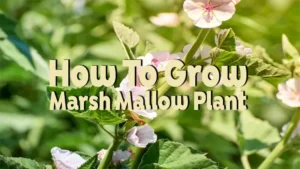


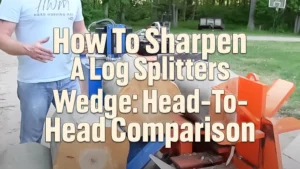


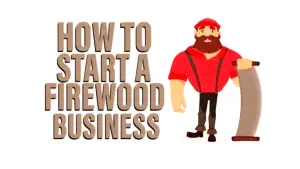

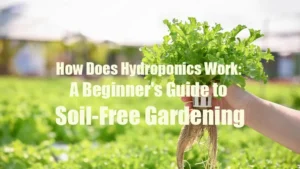
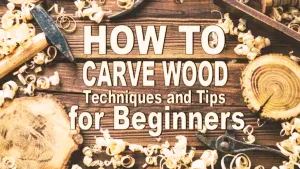

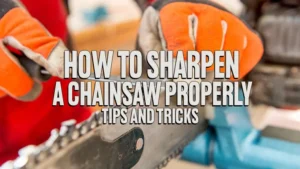
Leave your comment